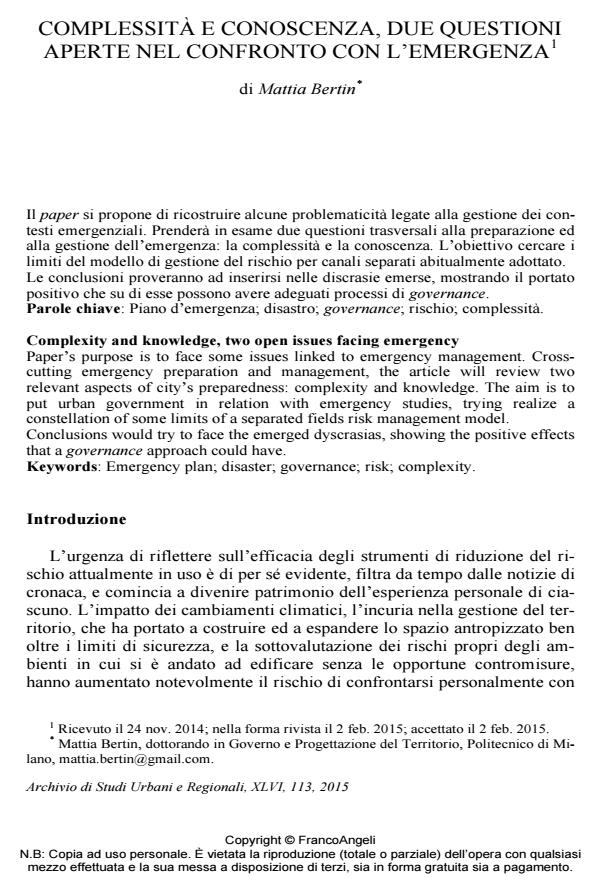Complexity and knowledge, two open issues facing emergency
Journal title ARCHIVIO DI STUDI URBANI E REGIONALI
Author/s Mattia Bertin
Publishing Year 2015 Issue 2015/113
Language Italian Pages 16 P. 44-59 File size 61 KB
DOI 10.3280/ASUR2015-113003
DOI is like a bar code for intellectual property: to have more infomation
click here
Below, you can see the article first page
If you want to buy this article in PDF format, you can do it, following the instructions to buy download credits

FrancoAngeli is member of Publishers International Linking Association, Inc (PILA), a not-for-profit association which run the CrossRef service enabling links to and from online scholarly content.
Paper’s purpose is to face some issues linked to emergency management. Crosscutting emergency preparation and management, the article will review two relevant aspects of city’s preparedness: complexity and knowledge. The aim is to put urban government in relation with emergency studies, trying realize a constellation of some limits of a separated fields risk management model. Conclusions would try to face the emerged dyscrasias, showing the positive effects that a governance approach could have.
Keywords: Emergency plan; disaster; governance; risk; complexity
Mattia Bertin, Complessità e conoscenza, due questioni aperte nel confronto con l’emergenza in "ARCHIVIO DI STUDI URBANI E REGIONALI" 113/2015, pp 44-59, DOI: 10.3280/ASUR2015-113003